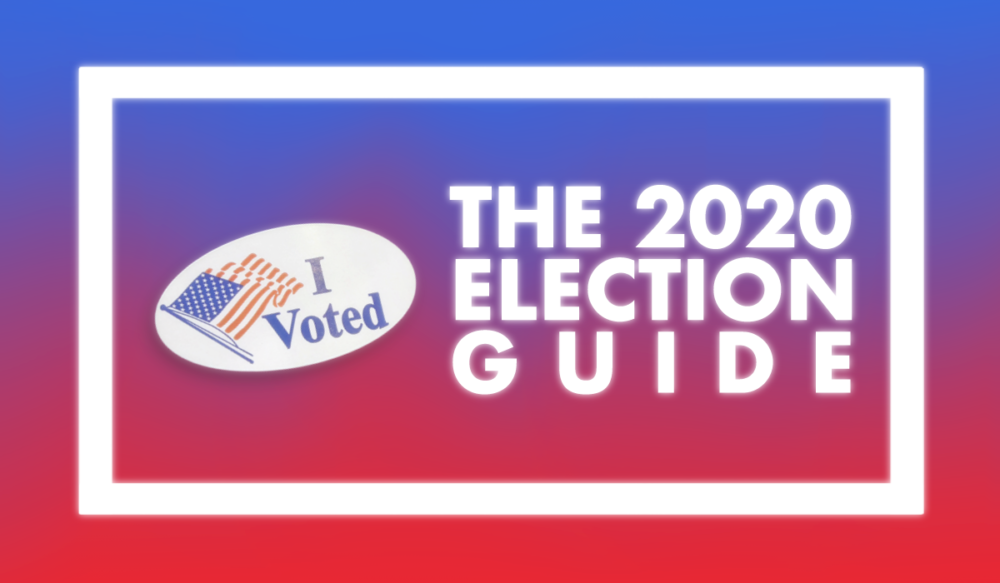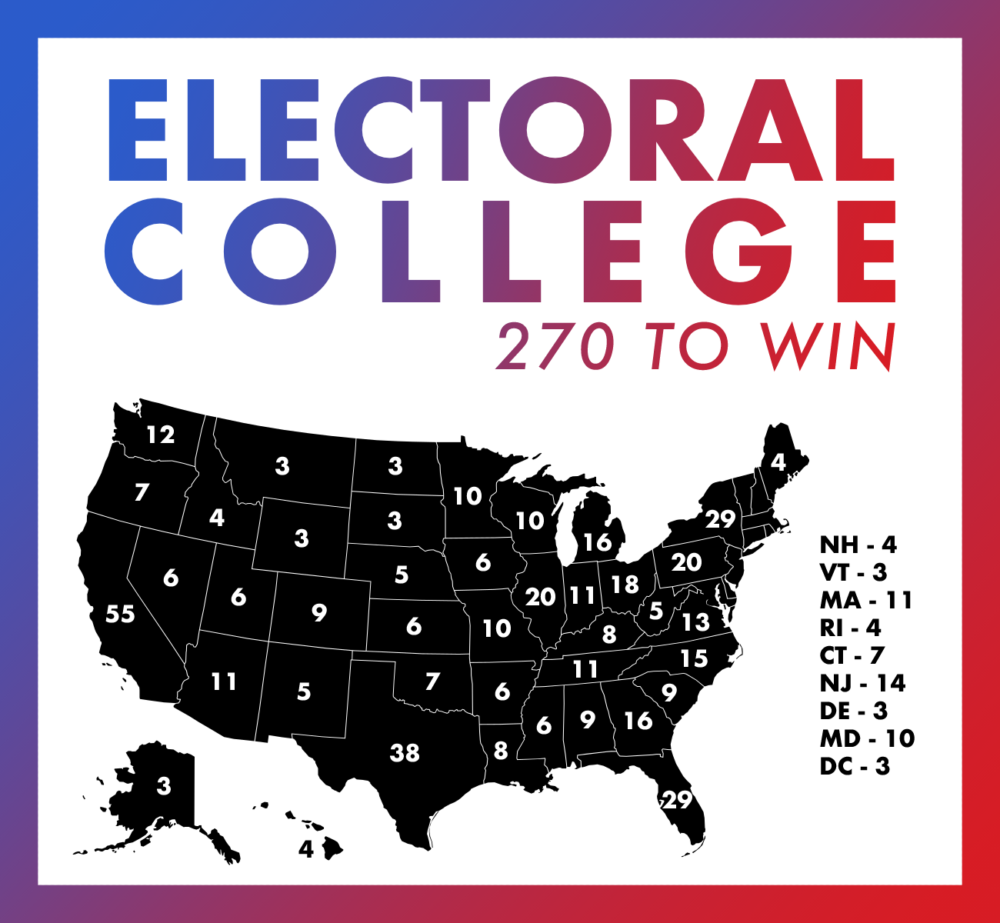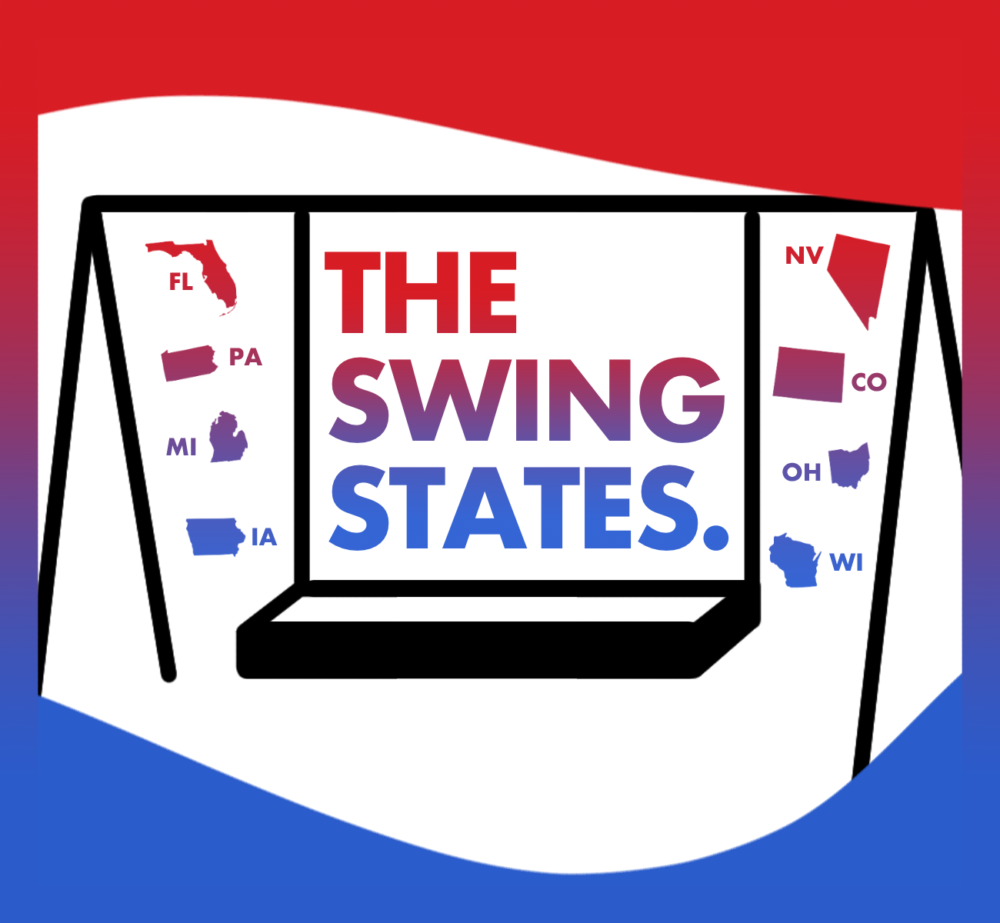
By Camelia Heins
With Nov. 3 right around the corner, it’s important to know the different terms that make up a presidential election.
Electoral college: This is used to elect the president and vice president as established in Article II, Section 1 of the Constitution. In this case, electoral votes decide the presidency, unlike popular votes. The electoral college gives more weight to states with smaller populations and also causes a presidential candidate to campaign all across the nation, instead of focusing on those with the largest populations. The word “college” doesn’t refer to an educational college but rather the body consisting of all electors across the nation.
Electors: Electors are members of the electoral college. The number of electors for each state equals the number of senators and representatives for that state. Electors do not directly vote for the president but vote in accordance with whom the people of their state voted for. For example, California has 55 electors. These electors vote for the presidential candidate that won in their state. There are 538 electors across the nation.
“270 to win”: This term is often used because only 270 electoral votes (votes given by electors) are needed to win the election. In 2016, President Donald Trump won 304 electoral votes and the presidency.

Popular vote: The popular vote is the total number of actual votes cast for a candidate. Whoever has the most votes has won the popular vote in an election. In 2016, Democratic nominee Hillary Clinton won the popular vote with 65 million votes over President Donald Trump who had 62 million votes. However, the popular vote does not secure the presidency as the winner is determined by the electoral college.
Swing states (battleground states): states that can (and often do) “swing” either way in an election. This means the people within these states don’t stick to one party every election and neither party dominates the state. The swing states include Florida, Michigan, Pennsylvania, Ohio, Iowa, Nevada, Wisconsin and Colorado.

“Red” and “blue”: Red refers to the Republican party and blue refers to the Democratic party. This year, the Republican presidential nominee is President Donald Trump and the Democratic presidential nominee is former Vice President Joe Biden.
Absentee ballots: An absentee ballot, also known as a mail-in ballot, is a form of voting that is used for voters who are unable to vote in-person. Due to concerns over the coronavirus, absentee ballots have been an issue during this election year.

Primary elections: These are elections held prior to the general election in November in order to determine the nominee for each political party. Different candidates from the same party run against each other during primary elections in order to secure the nomination.
Delegates: Delegates are awarded to a candidate during primaries. These are given based on how many votes each candidate receives in a state. To become a presidential nominee, a certain amount of delegates are required. The Democratic party requires 1,991 delegates to secure the nomination and the Republican party requires 1,276.
Canvassing: the process of asking for votes during an election. Anyone can volunteer to canvas for a specific candidate and these volunteers go door-to-door or contact people to vouch for their candidate.
Polling: the process of recording opinions or votes during an election to gauge the overall opinions of each candidate or issue.
District: A district is a specific geographical area within a state where representatives are elected. The state of California has 53 congressional districts, 40 state senate districts and 80 state assembly districts.
Precinct: Each district can be divided into precincts, which are smaller voting areas. Precincts are used to assign polling stations to each address and gather votes within that area.
Inauguration: The inauguration is the process in which a candidate is sworn into office. The upcoming presidential inauguration day is Jan. 20, 2021.
Incumbent: The incumbent is the official currently holding office and/or running for re-election. For example, President Donald Trump is the incumbent in this presidential election.
General and midterm elections: The general election occurs after the primary elections between the two nominees of each political party. These happen at the local, state, and national levels of government. Midterm elections occur in between presidential elections to elect members of Congress.
Understanding the many different aspects of an election can be complex and confusing. Hopefully, this guide provides you with enough information to understand one of the cornerstones of our democracy—voting.





